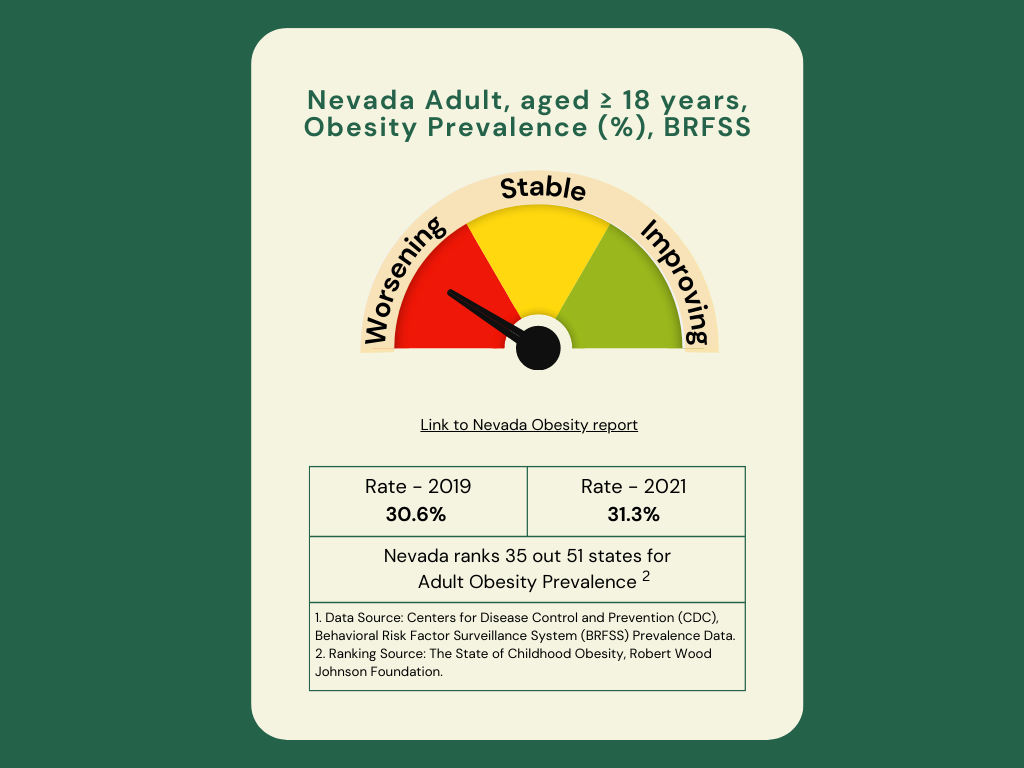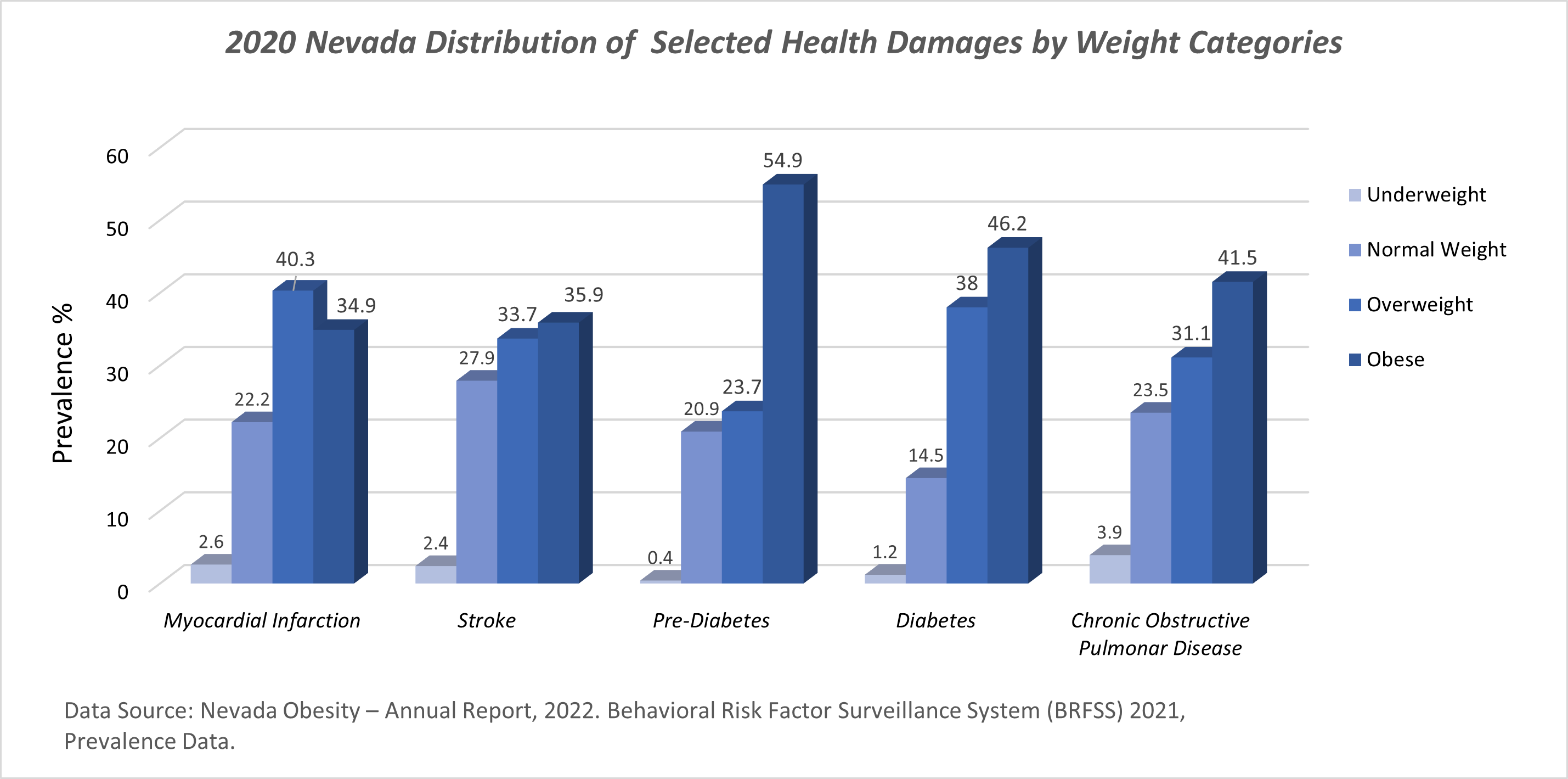Know the Facts
Welcome to our Know the Facts Page. In this comprehensive resource, we aim to provide you with insightful information regarding the state prevalence and rankings of obesity. Obesity has emerged as a significant public health concern worldwide, with far-reaching implications for individuals, communities, and healthcare systems. Through this page, we will explore the latest statistics, trends, and regional disparities in obesity rates in Nevada.
Adult obesity prevalence in Nevada has nearly doubled since 2000 (16%) and increased from 30.6% in 2019 to 31.3% in 2021. This trend in obesity rates calls for heightened awareness and urgent action to address this public health issue.
Youth obesity rates have increased from 16% in 2019-2020 to 18.2% in 2020-2021, indicating a concerning rise in obesity among young Nevadans. This upward trend highlights the urgent need to address risk factors for youth obesity through education, awareness, and interventions.
Obesity prevalence among Nevada WIC children aged 2-5 years has significantly increased, jumping from 7.6% in 2020 to 12.9% in 2022. This alarming rise in obesity rates demands immediate attention and action to prevent risk factors contributing to the disease in Nevada.
The percentage of Nevadans with overweight (40.3%) is notably the highest among cases reporting myocardial infarction, which suggests that the presence of overweight alone is a significant risk factor for the onset of myocardial infarction. Overall, the prevalence of stroke, pre-diabetes, diabetes, and chronic obstructive pulmonary disease, increased with the increase in weight.
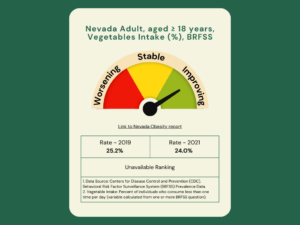
Vegetable intake has shown a minor improvement, with the percentage of adult Nevadans consuming vegetables less than once a day decreasing from 25.2% in 2019 to 24.0% in 2021. While modest progress has been made, a quarter of adult Nevadans do not consume vegetables daily.
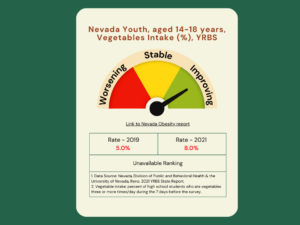
Vegetable intake has shown a slight improvement among young Nevadans, rising from 5.0% in 2019 to 8.0% in 2021. However, despite this improvement, approximately less than one in ten Nevada teens consumes an adequate number of vegetables.
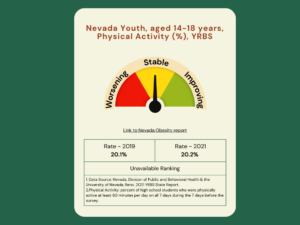
Physical activity in Nevada teens remained the same from 2019 to 2021. Only one out of five young Nevadans meets the daily physical activity recommendations.
Citation
The Robert Wood Johnson Foundation (RWJF) State of Childhood Obesity calculates health rankings using data from a variety of data sources, including federal agencies and national surveys. A lower ranking (e.g., ranked 46 out of 51) suggests that the state has performed well in the assessed factors and has relatively better health outcomes compared to other states. Conversely, a higher ranking (e.g., ranked 1 out of 51) indicates that the state may have room for improvement in certain health measures or faces challenges in specific areas.

